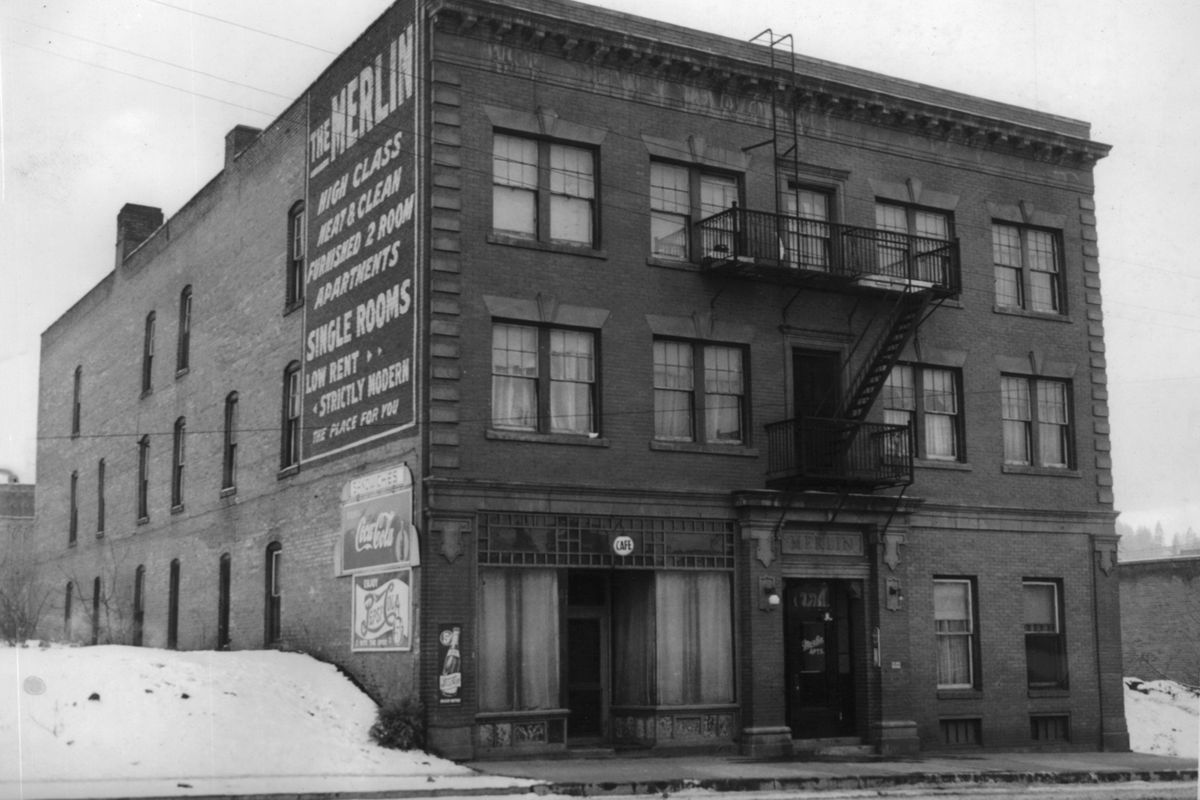This column reflects the opinion of the writer. Learn about the differences between a news story and an opinion column.
Then and Now: The Merlin Hotel

The Merlin Hotel, later called the Merlin Apartments, opened in 1911. It was built for attorney Burton J. Onstine for $33,000. Spokane’s population was exploding, having grown from 37,000 residents in 1900 to over 100,000 by 1910. A Spokesman-Review story said there were 120 licensed hotels at the time.
Classified listings said the Merlin was “neat, clean and classy.” Rent, paid weekly or monthly, was cheap.
Like many downtown hotels, it was near the railroad tracks, and the neighborhood around the Merlin consisted of other residence hotels, some auto shops and wholesale businesses.
The first generation of tenants were a mix of downtown hourly employees, including waitresses, salesmen and laborers, as well as seasonal workers from logging, mining and construction seeking shelter during their off seasons. They were mostly single men and women and a few couples.
Some residents stayed for decades. Fred Buzzard, an auto mechanic, lived there from 1931 to 1956.
During World War II, the tenant mix included many servicemen and defense plant workers.
Clarence Freeman, an African-American real estate developer, bought the building in 1948. Rent was $14 a month, including maid service.
After the war, Freeman said those with good jobs moved away and the tenant mix skewed older and poorer. Freeman sold it in 1951. A string of owners tried to keep the place up, but it continued to decay.
In 1989, Kit King, a photographer at The Spokesman-Review, moved into the aging hotel and began a photo project focusing on the elderly residents and their life in the dingy building. King was threatened by drug dealers, and some of his cameras were stolen. He photographed people living in fear and fighting in the hallways. His subjects included a teenage prostitute and drug addict. The story by King and writers Julie Sullivan, Rick Bonino and Steve Massey was called “Desperate Days at the Merlin” and was published in February 1990.
The story prompted a cleanup and efforts to curb crime inside the Merlin. In 2000, the Spokane Dream Center, a Spokane Valley-based church, bought the building and now houses up to 30 men for a one-year, faith-based recovery program.
Pastor Dave Darroch said, “We call it a discipleship program because it is faith based, and they stay for one year. They do not work at all, and the program is free.”